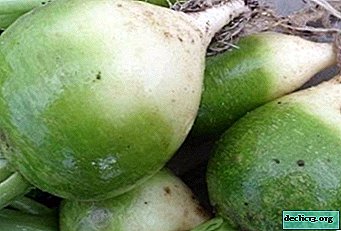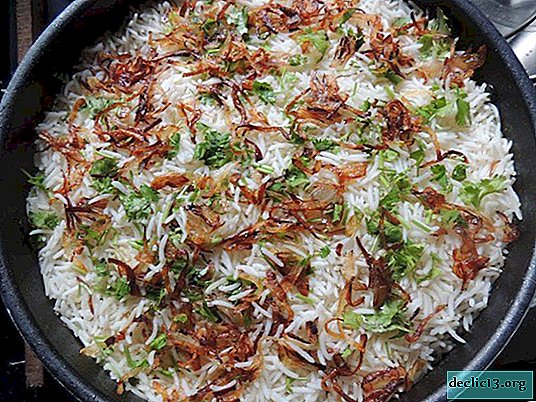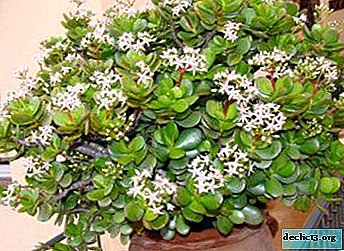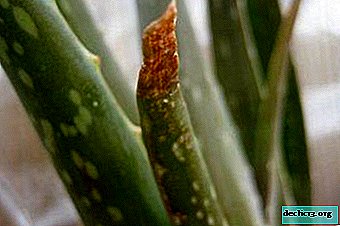Refined and tender Hirita - flower photo, description of varieties, cultivation features
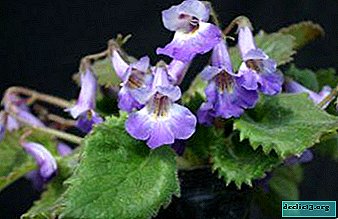
Chirita (Chirita) - an unusual tropical plant, which became known recently. However, due to its attractive appearance and ease of care, it is rapidly gaining more and more fans.
The homeland of this exotic flower, the species of which can be both annuals and perennials, is the tropical regions of Asia.
We will tell you what kind of plant it is, with which he needs care at home and on the street, we will show photos of flowers.
What is this plant?
Species of the Chirita genus are either perennial herbaceous shrubs or annual herbaceous plants.Among annuals, there are miniature species with one or two leaves.
Description and photos of popular varieties
The genus of Khirita has many varieties and varieties.
Primulina
A neat rosette of primrose leaves is often compared to a senpolia rosette. Themselves leaflets are arranged symmetrically, can be glossy or slightly pubescent. The color is mostly solid green, but motley specimens are also found.
In most species, the rosette forms without stems, although in some cases a short stem is still present. The leaves of primrose throughout the life of the plant grow in breadth, and sometimes form a kind of tiers. Their size can vary from large to very small. Very often on the surface of the leaves you can see a semblance of a silver pattern.
The flowers are in the form of a narrow tube and consist of five petals. They are collected in inflorescences and can be of almost any color, however, light shades still prevail. In some cases, darker stripes are located on the surface of the petals. It is noteworthy that primrose blooms almost all year round with small interruptions.

Tamiana
It is a plant with a small outlet. The diameter of the leaves is 10-15 cm, they have a rounded heart shape and resemble the leaves of the Uzumbar violet. In appearance fleshy, have a slight pubescence.
Peduncles are low, up to 15-20 cm. On each of them several white flowers are formed with blue spots or two purple stripes closer to the neck. Flowering lasts all year and depends on lighting, there are no certain periods of rest.

Aiko
Hybrid variety. Rosette is medium in size, the leaves are elongated, pointed and resemble an ellipse in shape. Dark green, slightly pubescent, fleshy. The flowers are large enough, bright yellow with a wide bell. Bright orange markings can be placed on the neck, which look quite impressive.

Sinensis hisako
It is rightfully considered one of the most beautiful varieties. Variegated leaves, very pubescent, with long light villi. They are rather large in size, painted green and have a pattern in the form of silver spots. The flowers are lavender-colored bells with a bright yellow throat.

Silver surfer
The pubescent leaves of a lanceolate form form a dense leaf rosette. Usually saturated green, with a pearlescent net pattern. Lavender-colored bell flowers with a darker mesh pattern and orange spots on the neck. Collected in inflorescences, on each peduncle several flowers.

Chinese
A low perennial plant with a height of up to 15-20 cm.The leaves are oval, fleshy, form a powerful basal rosette. They can be bright green or silver with green spots, covered with long light hairs. The edge of the leaves is serrated. Peduncle tall, smooth, red. Themselves medium-sized flowers, lavender-violet, collected in inflorescences.

Lavender
Annual with a tall, slightly pubescent stem. The leaves are oval, light green, with the lower ones being larger than the upper ones. Flowers are located in the leaf sinuses and on the tops of the shoots. Coloring, as a rule, is gentle lavender. The fruits of the plant are elongated, in the form of a long box.

Breeding
There are two main ways of propagating chiritis - seed and vegetative.
Cuttings
Propagation by cuttings is more suitable for perennials.- The handle is carefully selected. It should be healthy, not old, preferably medium in size. After this, it is required to place it on a flat surface with the wrong side up and cut the stalk near the base of the leaf plate. As the roots begin to grow from the veins of the leaf, it will only interfere.
- Soak a peat tablet in water, preferably warm, and shake in a small glass.
- Submerge the handle in a glass to half and slightly compact the soil from the edges.
- Put the cup in the container, and then cover with a lid or plastic wrap - it will serve as a kind of greenhouse.
- In a month young sprouts will appear. When they get stronger, they can be dived and planted in separate containers.
Leaf
Hirita is a decorative and beautiful flower, which when leaving at home does not require much effort, the flowers can be of different colors like the leaves.
 To propagate hirita, even a piece of leaf will be enough.
To propagate hirita, even a piece of leaf will be enough.
- The sheet must be divided into strips of several centimeters. You need to cut perpendicular to the main vein, it will play the role of the petiole.
- Plant the material at a distance of several centimeters from each other, slightly compact the earth around.
- For containers, it is imperative to find a warm place and do not forget to air daily. Watering is carried out through the pan.
- Sprouts will begin to appear in a half to two months.
Seeds
From seeds they prefer to grow annual hirits. The optimal time for sowing is considered mid or late February.
- Sowing of seeds is carried out without seeding and sprinkling with earth. Germination must occur on the surface.
- Cover the container with glass or film to create a warm, moist environment. The optimum temperature is 25-26 degrees. The closer the temperature regime to the ideal, the faster the seedlings will hatch.
- The soil must be moistened on time, and it is important to prevent excess moisture. In addition, seedlings should receive enough light.
- After the appearance of cotyledon leaves, you can begin to pick.
Home Care
- Lighting. Hirits are demanding of light, but they cannot tolerate direct sunlight. Diffused light is best suited, so the plant should be placed near the west or east window. In order for the leaves to grow symmetrically, hirita is sometimes turned around its axis.
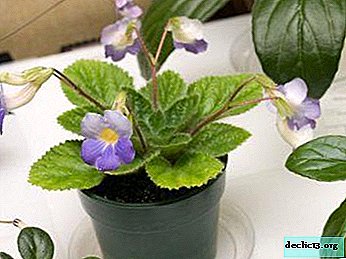 Watering. When watering, the most important thing is to prevent waterlogging. Water the plant only when the topsoil becomes dry. It’s best to water the pallet, so its water will fall on the leaves. In the cold season, watering is less common. Mild drought will not harm hirite, but excess moisture can ruin the roots.
Watering. When watering, the most important thing is to prevent waterlogging. Water the plant only when the topsoil becomes dry. It’s best to water the pallet, so its water will fall on the leaves. In the cold season, watering is less common. Mild drought will not harm hirite, but excess moisture can ruin the roots.- Temperature. It is important to remember that hiriths cannot tolerate heat. In summer, the temperature that is most convenient for them is 22-24 degrees, and in winter 15 degrees Celsius is enough. In winter, the vital processes of the flower slow down, a semblance of a dormant period sets in.
- Priming. The best soil for a plant is a mixture of deciduous and sod land. Sometimes humus and sand are added to this composition. To avoid excess moisture, charcoal is added to the soil. A ready-made substrate for the senpolia is also suitable.
- Pot. Frequent transplantation of the flower is not required, the pot can be changed every 2-3 years. The container must not exceed the diameter of the leaf rosette; it is better if it is more wide than deep. A small layer of expanded clay is laid out at the bottom, the presence of sewage holes is mandatory.
- Top dressing. Chirites are fed annually, preferably in the warm season. Ideal composition for senpolia with a high content of macronutrients.
- Pruning. Too often pruning a plant is not necessary. It is most convenient to do this either in the spring, before the start of the growing season, or in the fall, when the period of active flowering has already been completed. Dead leaves must be removed in a timely manner.
Features of outdoor care
Hirit can be found in the open ground only in the warm season, provided that it is suitable for it and there is no direct sunlight. Water it with warm water and make sure that the ground is not too wet. At cold temperatures, the plant dies.
Frequent diseases
The plant is rarely affected by pests, much more often it is necessary to deal with rotting of the roots and the appearance of spots on the leaves. In the first, excessive watering is to blame, in the second - sunburn or, conversely, frostbite.Despite the fact that hirita cannot be called a demanding plant, it is very important to take into account the nuances and recommendations when caring for it. If all the requirements are met, the process of growing a flower will bring only pleasure.

 Watering. When watering, the most important thing is to prevent waterlogging. Water the plant only when the topsoil becomes dry. It’s best to water the pallet, so its water will fall on the leaves. In the cold season, watering is less common. Mild drought will not harm hirite, but excess moisture can ruin the roots.
Watering. When watering, the most important thing is to prevent waterlogging. Water the plant only when the topsoil becomes dry. It’s best to water the pallet, so its water will fall on the leaves. In the cold season, watering is less common. Mild drought will not harm hirite, but excess moisture can ruin the roots.